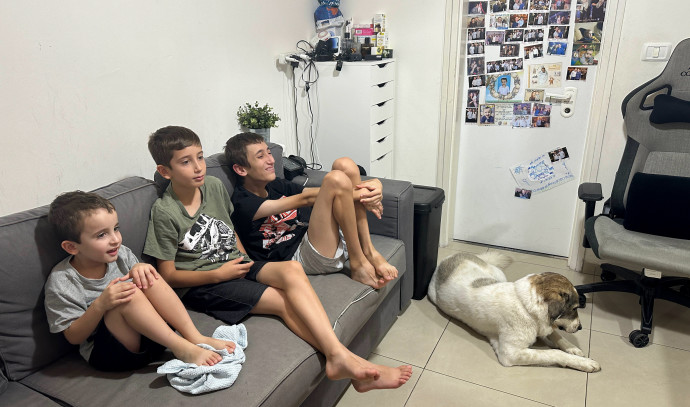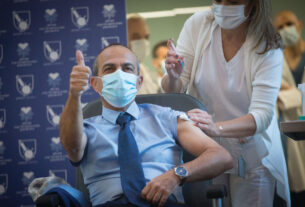Just two weeks after the war against Hamas began, the best minds in the country got together to prepare two extremely detailed documents on how to receive and treat captives physically and emotionally if and when they are released and brought home to Israel.
The focus was on infants, children and teens, but most of the guidelines are relevant to adults as well. The suggested protocols were then sent to other experts for comments and online training of medical professionals and social workers was launched.
The guidelines of over tens of thousands of words can now be implemented when the children and some women are about to be freed. As Israel has never in its history been faced with such a tragic and unprecedented event of dozens of hostages of all ages being freed after weeks of suffering and neglect, the guidelines had to be composed from square one.
Those involved in the writing and those consulted by the team declined on Wednesday to be interviewed by The Jerusalem Post or other journalists on the grounds that it was too premature and that they first wanted to make sure that Hamas was in fact releasing captives and to start treating the returnees.
If a soldier is the first person to receive the child, one should be assigned to each youngster or each family unit. When the soldier meets the child who is old enough to understand, the military person should introduce himself this way: “”Hello, my name is ____, I am a soldier in the Israel Defense Forces and I am accompanying you to get home. You are in a safe place. I am here to take care of you, you are safe.”
The child should not be picked up or held without his permission. Even if it’s a baby who can’t walk, he should be asked before picking him up: “Come, I’ll take you in my arms, okay?”If the child asks questions such as “Where’s Mom? Where’s Dad?” the soldiers must not answer these questions, even if they know the answers. Every question must be answered along the lines of “Honey, I’m sorry, I don’t know. My job is to bring you to Israel to a safe place, where people you know will be waiting for you and will answer all your questions.”
The child should be addressed by name as much as possible to strengthen his sense of familiarity and confidence.
The abducted children are of different ages and at different levels of development, including children with disabilities who have unique developmental needs. Individual adjustments must be made for each child in relation to his or her age and developmental level, they wrote.
Even babies and toddlers who don’t yet speak will always remember what they experienced. It is critical to remember that they very much need our words, for the understanding of what happened and to give words about what we see about them, the team advised.
Recommended methods for caring for traumatized children
All the abducted children went through complex and severe interpersonal trauma, so the team who will care for them have to learn about the suffering of each child so as to design the reactions to them in the best way. The situation of each child’s parents, siblings, extended family and community must be understood to best care for the child. The guidelines cover the reception phase during the first 24 hours, the first week and the first six months after their return.
The children’s familiar and significant figures, if they exist, should welcome them upon their return to Israel. The carers must know if the child lost a parent, sibling, grandparent or others so they can be prepared to “announce bitter news” and to contact the significant figures, the anchors that remain in the child’s life and how they can join the treatment and healing process at the appropriate points. If the child had a pet that is alive, it is of central importance to reintroduce the pet to the child at the earliest possible stages – even during the initial medical examinations.
Special-needs children have to be treated with great sensitivity and skill. If the children has a history of chronic diseases and have not received medication, they may behave in a way that is not usual for them. All of their basic needs from a toothbrush and toothpaste to clothing and eyeglasses must be provided. If there were significant objects that were destroyed by the terrorists, new ones that are similar to the original ones should be bought and given to the child.
In the first hours after arrival, the medical professionals must ensure that as many children (if they return together as a group) will be received together in the same place that is warm and visually pleasant, organized and uncluttered, but with a cozy blanket, pillows, dolls and toys. The main aim is to restore control to the children and giving them choices throughout the process. Their wishes and requests must be listened to and respected, the team advised. The carers should find out and bring food that the child likes to eat, but they should not be overwhelmed with food or sweets.
Invasive medical interventions and even showers should be avoided initially as much as possible; bathing can be offered in the first 24 hours but should not be forced. During a medical examination, it is important that throughout the examination the doctor explains to the child what she or he is going to do. For example, the doctor will ask the child if he can lift his shirt and listen to his lungs. Throughout the entire process, the child must be told constantly what is going to happen and allow him a choice.
Any meeting of the children with the media, in any form, must be absolutely prohibited at least during the first 24 hours after their release and preferably much longer.
Distant relatives, neighbors and the like who ask to meet the child immediately upon his return should not be allowed access during the first days, and the child must have the right to choose if there is someone who is important for her to see, like a friend. The child must be told all the time that she is safe and protected. The returnees should be told: “You went through such difficult things, it saddens me but I’m glad you’re here now… You’re so brave to share what you went through.”
A significant lack of eating can cause metabolic disorders as well as serious disorders in the fluid balance and the electrolytes that may cause serious clinical consequences including damage to the nervous and respiratory systems, cardiac function and muscular and blood systems. This disorder is called Refeeding Syndrome. The biochemical characteristics include a decrease in phosphorus, potassium and magnesium, disturbance in sodium and fluid balance, changes in the metabolism of sugar, protein and fat and lack of thiamine (vitamin B1).
To prevent endangerment of their health, all the security forces must be told not to feed them anything except water. Within minutes, they will reach a hospital, where they can be given a sweetened hot drink, applesauce without added sugar and a few cookies. Babies up to one year of age should drink up to 120 ml. of baby formula. Advice on feeding children and adults after that is given in detailed menus.




